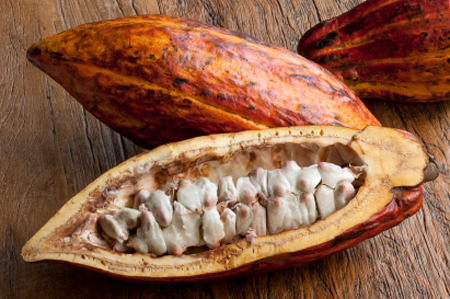Ivory Coast Cocoa Purchases Slow as Rain Damages Quality
Category: Cocoa
 (Bloomberg) – Cocoa purchases from Ivory Coast, the world’s biggest producer of the chocolate ingredient, slowed as persistent rainfall caused bean quality to deteriorate.
(Bloomberg) – Cocoa purchases from Ivory Coast, the world’s biggest producer of the chocolate ingredient, slowed as persistent rainfall caused bean quality to deteriorate.
Rainfall averaged 6.4 millimeters (0.3 inch) a day in 15 cocoa-growing areas June 16 to June 20, down from 9 millimeters the previous week, according to CICO Services, an agronomy intelligence agency based in Abidjan, the commercial capital. Combined precipitation for the areas fell to 479 mm from 676 mm.
The rainy season in the West African state’s southern forest areas, where cocoa beans are cultivated, started mid-March and should last until the end of this month. Heavy rainfall has been recorded in recent weeks. Purchases of beans slowed last week in some areas because beans delivered recently to the ports at San Pedro and Abidjan were of insufficient quality as a result of the rains, according to CICO.
“Some exporters have decided to suspend their purchases until the meteorological conditions improve,” CICO said.
Conditions were favorable for development of flowers in trees in the last week, as precipitation was mixed with sunshine, CICO said in an e-mailed document. The average temperature for the 15 areas was 31 degrees Celsius (88 Fahrenheit), unchanged from last week, the company’s data showed.
The country’s southwestern regions got more rain than other cocoa areas last week, according to the data. The coastal towns of San Pedro and Tabou got 8.6 mm and 14.4mm a day respectively. The western towns of Duekoue and Soubre recorded 5.8mm and 5.2mm a day respectively.
Raining Daily
“It rains every day,” Jean Gonyasseu, who farms 5.5 hectares (13.6 acres) of cocoa in the western village of Lonneu, said by phone June 23. “One day, the rain is heavy, one day it is light.” Gonyasseu said he hasn’t seen so much rain in June for a decade.
In Abidjan, on the south coast, rains caused flooding and mudslides and as many as 23 people died, according to state-owned Fraternite Matin newspaper.
In the southern town of Fresco, two rivers overflowed and flooded houses and farms, Joachim Fregbo, who has an eight-hectare cocoa plantation, said by phone.
“It hasn’t rained in the past two days but the water is still high and we can’t access the plantations,” Fregbo said.
Farmers in Ivory Coast reap a main crop from October to March, while a smaller harvest, called the mid-crop, is produced from April to the end of September. Cocoa trees need adequate rain and sunshine to develop pods, and a lack of rain may prevent flowering.
Cocoa for September delivery rose 0.6 percent to 1,921 pounds ($3,261) a metric ton on NYSE Liffe in London by 12:05 p.m., advancing for the first time in three days. Cocoa for delivery in the same month advanced 0.7 percent to $3,063 a ton on ICE Futures U.S. in New York.

